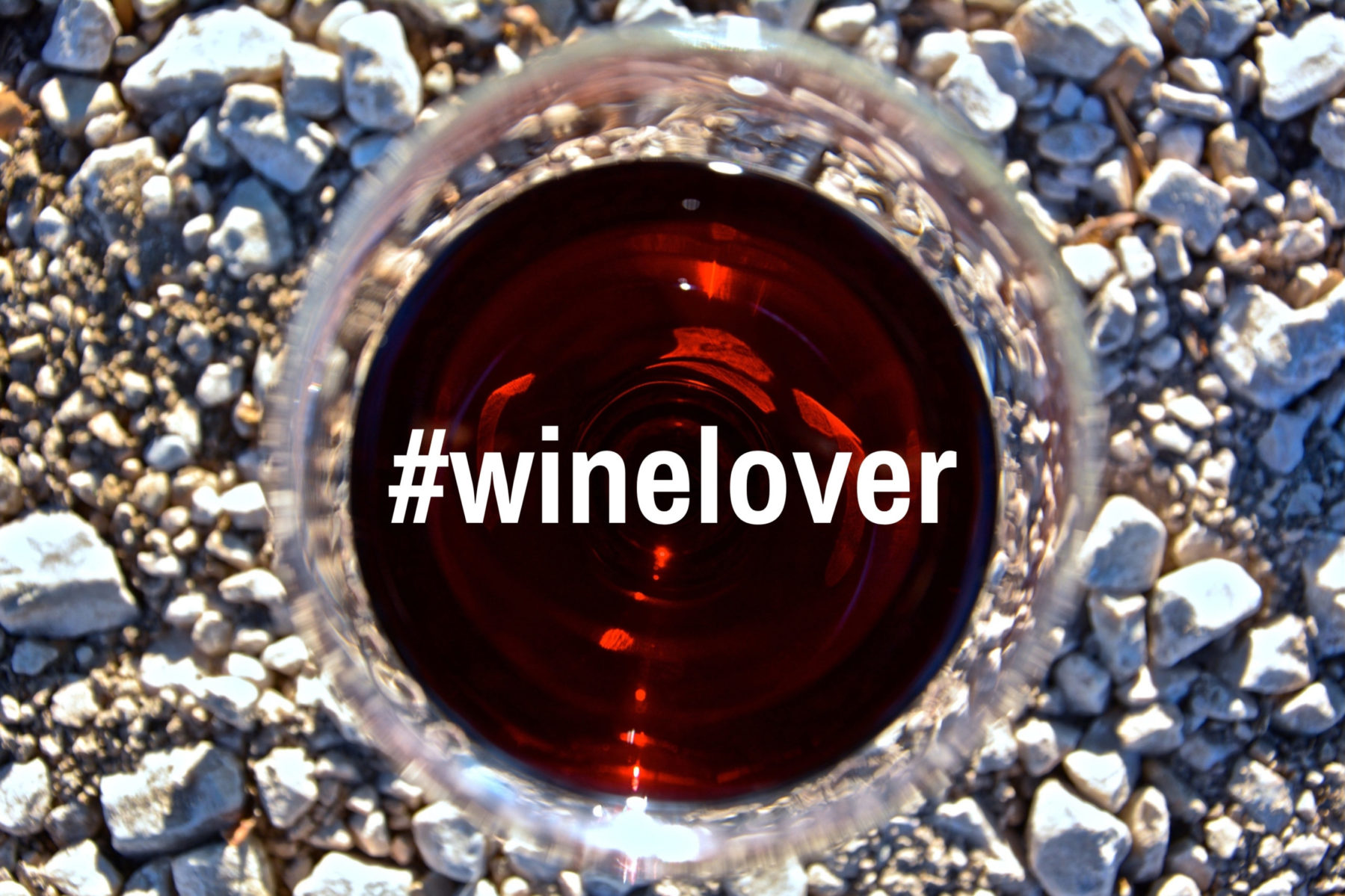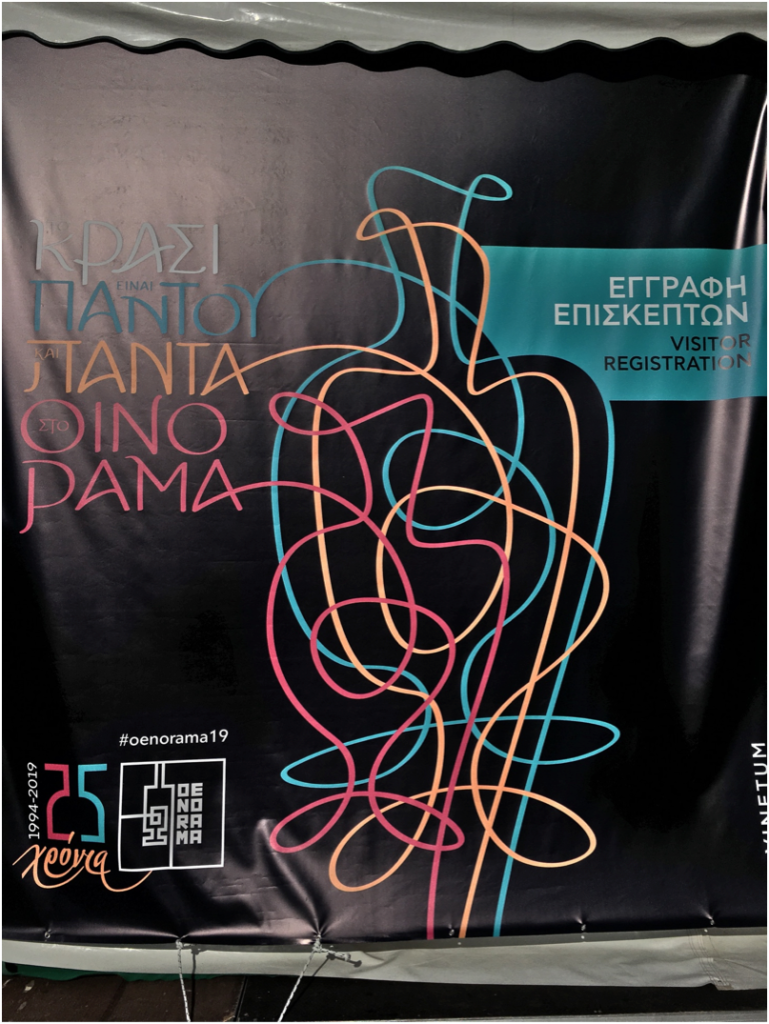
…
On March 1st til 3rd, 2019, the 26th edition of Oenorama has taken place in Athens in the beautiful venue of Zappeion, five minutes walk from Syntagma Square

Some 180 wineries from across the country were present bringing the flavors of many varieties and terroirs. Since the subject is, in my opinion, very vast, I’ve chosen to focus this article on the insular production.
Here’s a review of the wines that I’ve liked the most:
MANOUSAKIS WINERY – From Hania (Crete)
Nostos Assyrtiko 2017 – Fermented and aged in steel tanks, four months on lees .
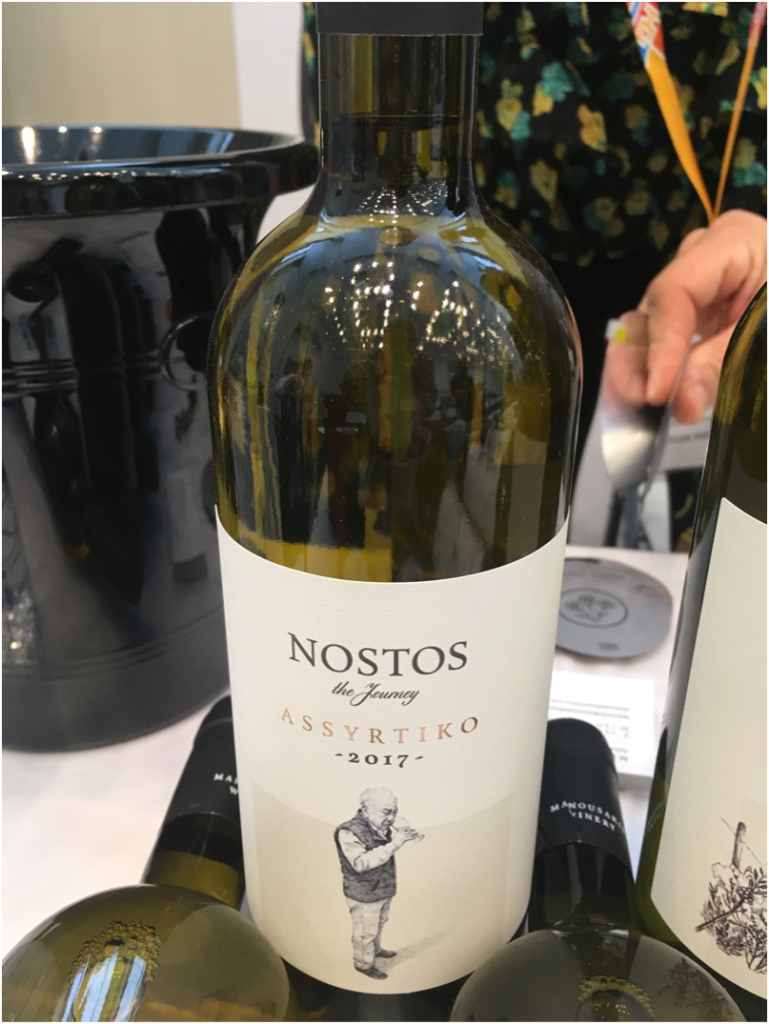
Nose: gentle fruit (golden apple)
Palate: the fruit persists, flinty minerality mostly retronasal,
good structure and acidity, long finish
…
-Nostos Vidiano 2017 – Same vinification and ageing for this wine from an authoctonous variety as for Assyrtiko.
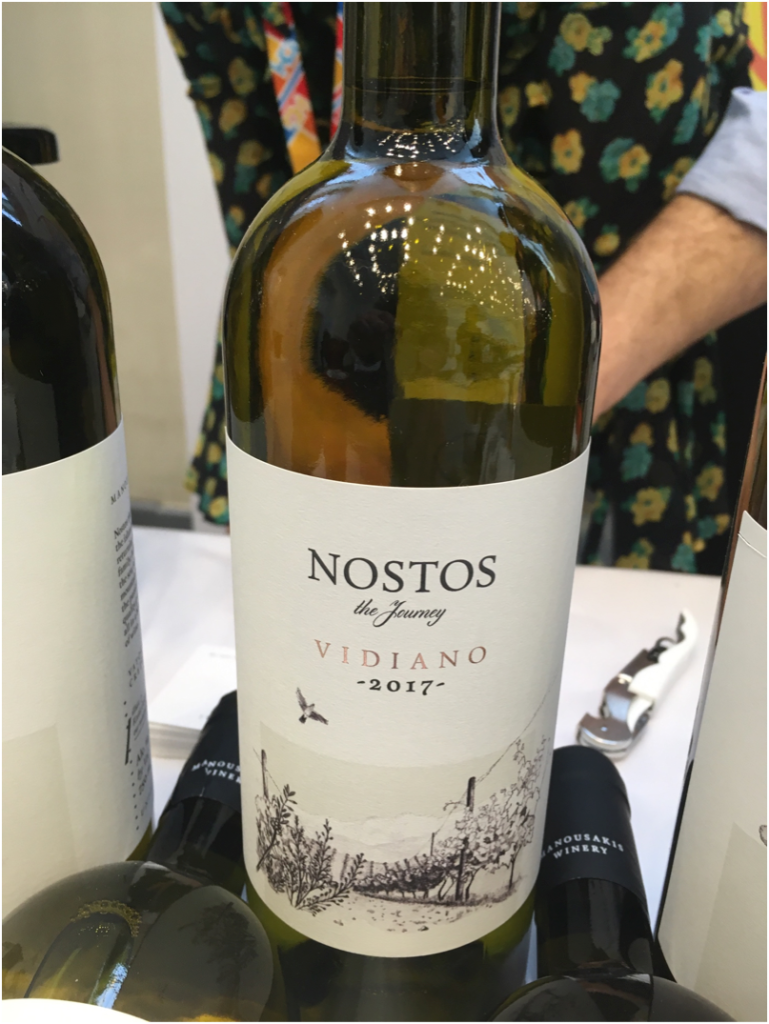
Nose: complex, fruity (golden apple to quince), but mostly floral (yellow)
Palate: less acidity than in the Assyrtiko, however enough to assure enjoyment, the nose aromas are confirmed, no minerality, amazing persistence. This is a white to look after.
…
–Nostos blend 2016 (43% Syrah, 34% Mourvedre, 20% Grenache Noir, 3% Roussanne) – Aged in barriques
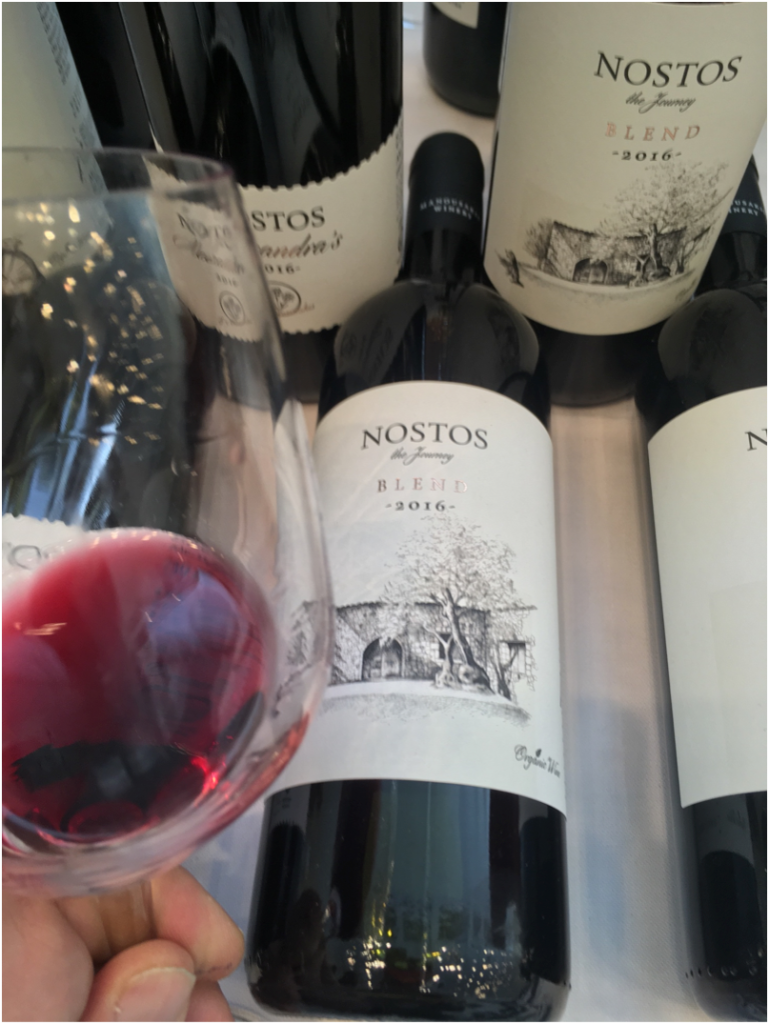
Nose: firstly fruity (especially blueberry, a bit of black currant), hints of spices
Palate: spices much more evident, mostly cloves, a bit of black pepper, a beginning of balsamic vegetal notes such as laurel, tannins very present, still a bit biting in the middle of the tongue, the finish surprises for its finesse, a silky sensation which wraps around the back of the palate, with some wild rose’s hints, that’s why on my post on #winelover I wrote ”it nebbiolizes” Really a fabulous red, strongly advisable to wait two, better three, more years before drinking it.
…
Other two wines I liked were Nostos Muscat of Spina (Muscat petits grains)– from ungrafted vines at 700 mt. of altitude, dry, jasmine nose but less intense than in versions from other parts of the world, it surprises for its structure, pretty pronounced for the varietal.
Nostos Roussanne 2017 Fermented and aged with lees for six months in French oak barrels You can feel the vanilla, but very good especially if you’re fond of Northern Rhone whites.
…
SILVA WINERY – From Iraklion (Crete)
-Grifos white 2017, no added sulphites, 100% Vidiano, vinified on skins in 3hl amphoras, where it stays for a month and a half, then a further 4 months in oak.
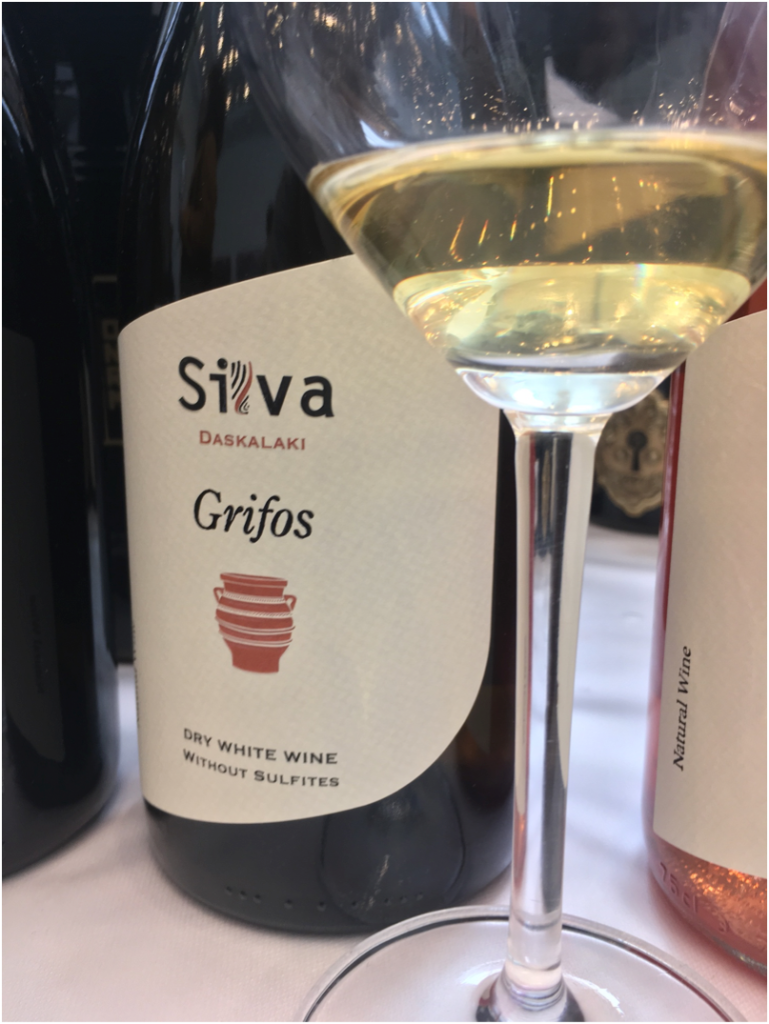
Eye: clear, golden/greenish
Nose : very complex bouquet of white and yellow flowers, also fruit’s scents (nectarine)
Palate: splendid balance, here even more floral than on nose, extremely long finish.
…
-Grifos Rosé 2018 100% Liatiko, vinified in amphora, also here no sulphites were added.
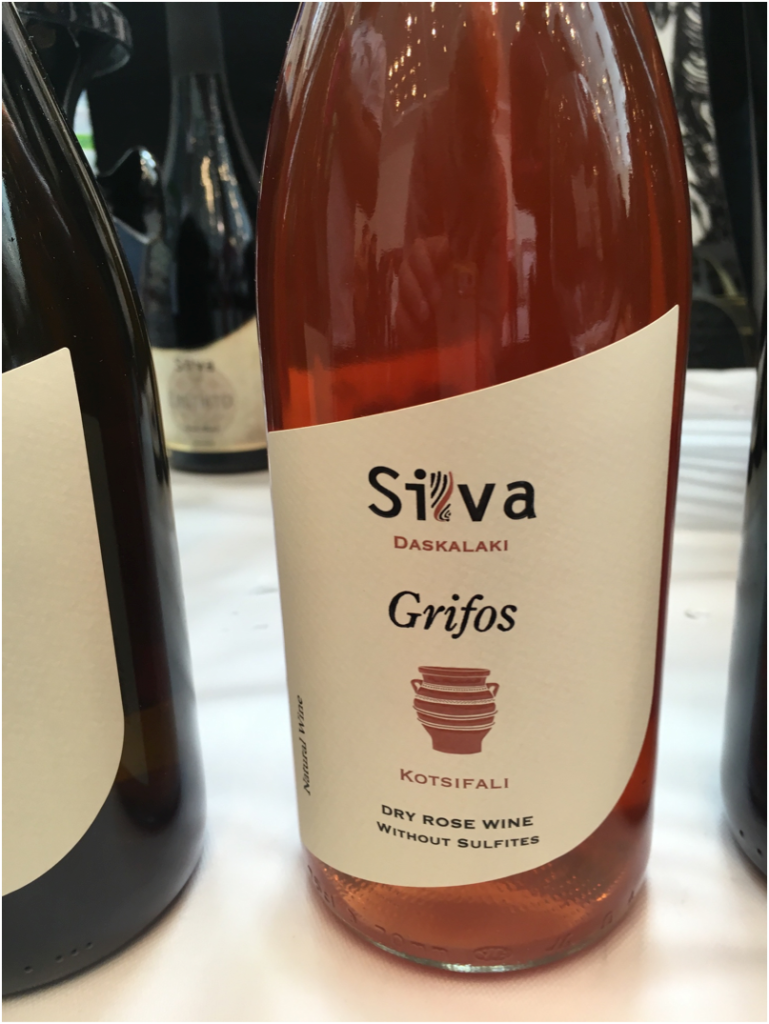
Nose: some oxidation at the beginning, very floral.
Palate: here I couldn’t feel any oxidation, it confirms the floral character and surprises for its salinity. Amazing length.
…
-Silva Liastos 2009 – Sweet Fortified Aged four years in barrels
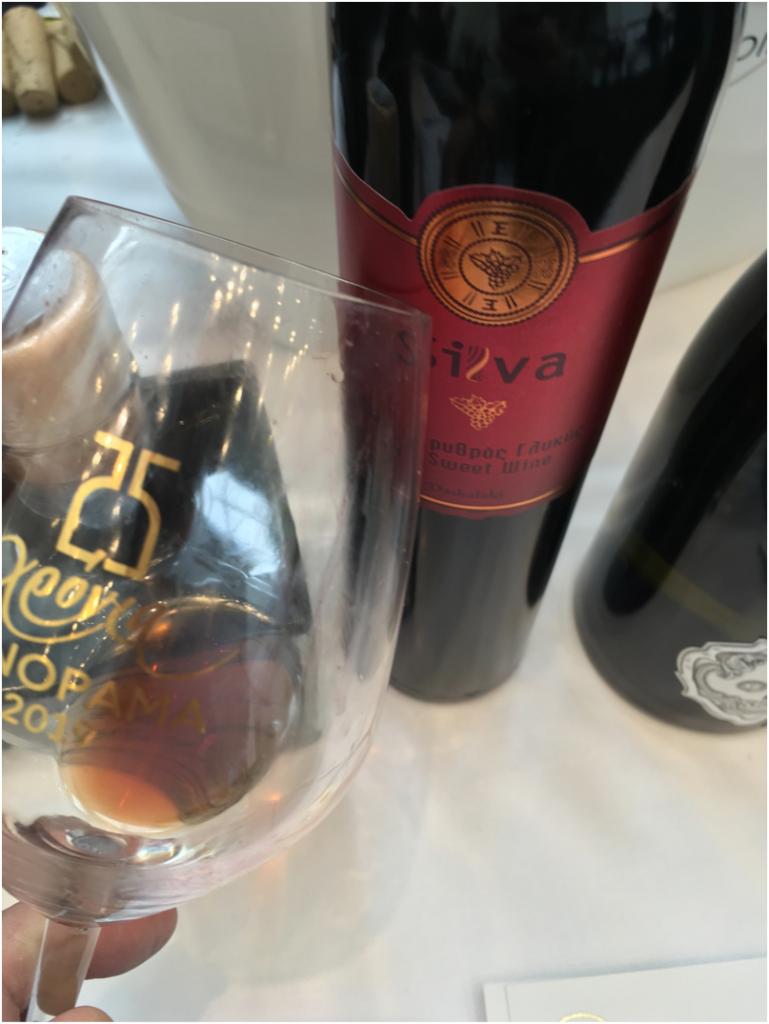
Nose: completely oxidative, hazelnut, cinnamon, fenukgreek.
Palate: as expected acidity is very low, olfactive notes are confirmed, very persistent. The taste is so intense that you can have it right after a black coffee and still be able to enjoy it as a digestif, or, even better, pair it with old cheese
…
All the wines presented by Silva were convincing, a special mention deserve their conventional Vidiano (2018) and the Psithiros red 2014 (60% Liatiko, 40% Merlot)
…
-GENTILINI – from the Ionian Island of Cephalonia.
On Cephalonia the dominant variety is Robola. Until recently it was thought identical to Ribolla Gialla/Rumena Rebula. Now we know that there are differences in their DNAs, I can tell that the organolectic spectrum is similar to the one of its northerly relative, but it ripens quickly, while Ribolla Gialla is a late variety.
-Gentilini Robola of Cephalonia 2018.
Eye: clear straw yellow – Nose: citrus fruit, mostly yellow grapefruit – Palate: whenever I spot the grapefruit on the nose I get a little nervous before the first sip, I’m afraid of harsh acidity and/or bitterness, here everything went smoothly, the structure and some fat sensations softens the citrus which is well present until the long finish.
…
Gentilini Lees24 Robola 2015. 24 months on lees and 36 of total ageing give a splendid wine.
Eye: nearly identical to the younger one – Nose: very complex, less citrus (anyway present), white flowers and sweet spices. – Palate: on top of the aromas above mentioned, a lot of salty minerality. It’s very lively and persistent. Yet another example that you can make great whites in a Mediterranean climate.
…
–GRAMPSAS WINERY from the Ionian island of Zakynthos
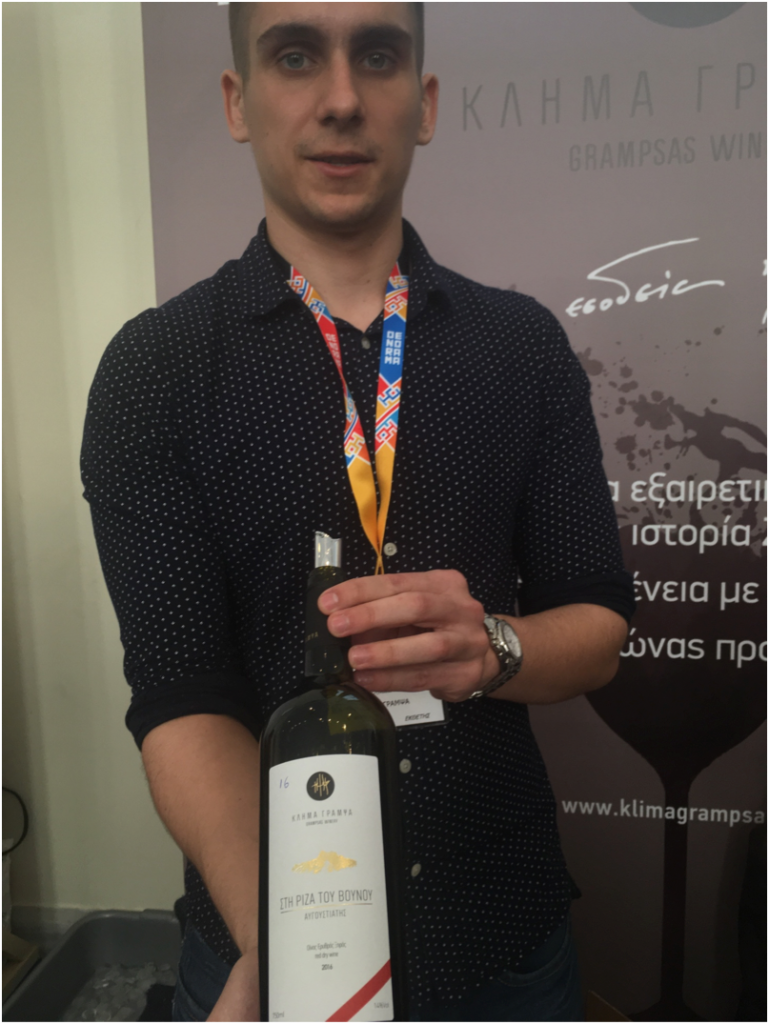
Eye : dark color, you couldn’t see through the glass
Nose : mostly spicy, black pepper but also a bit of sweet spices, such as cinnamon and coriander.
Palate : medium body, silky feeling, good length.
I’ve liked it a lot, somehow reminded me of a Danubian red.
It was my favorite of a mini-vertical which also included the 2017 and 2015. Still a bit too oaky the younger, missing some acidity in the older.
…
SARRIS WINERY From Cephalonia
Robola 2018 (Brut de Cuve)
Briefly because some organolectic such as the visual ones will change soon: the nose showed intense golden apple and some yellow grapefruit, on palate a big salinity and, surprisingly for a Brut de Cuve, an incredible length. The coming summer quite a few tourist on the island will be stunned by this wine.
V for Vostilidi 2017. An indigenous white variety
Eye: clear straw color – Nose: delicate and floral – Palate: an explosion of vegetal aromas, sage, menthol, very good structure, a persistent warm and round retronasal feeling which made me asked if Vostilidi was related to Trebbiano (“Not at all” the answer)
…
Kokkino Sarris (Red of Sarris) 2018 100% Dry Mavrodaphne from a 700mt of altitude vineyard. No sulphites were added.
Eye : almost black – Nose : lovely, mostly black cherry, a bit of black cherry too. – Palate: the acidity is moderate but the wine isn’t flabby at all, thanks to a quite high tannicity and to a lot of salinity. Very persistent.
…
-LIPSI WINERY From the island of Dodecanese with the same name.
-Aposperitis 2013 – A sweet, red wine, 100% Fokiano. Late Harvest then the raisins are left three to four days on mats for sundrying. To make a liter of must they need about four Kg of grapes.
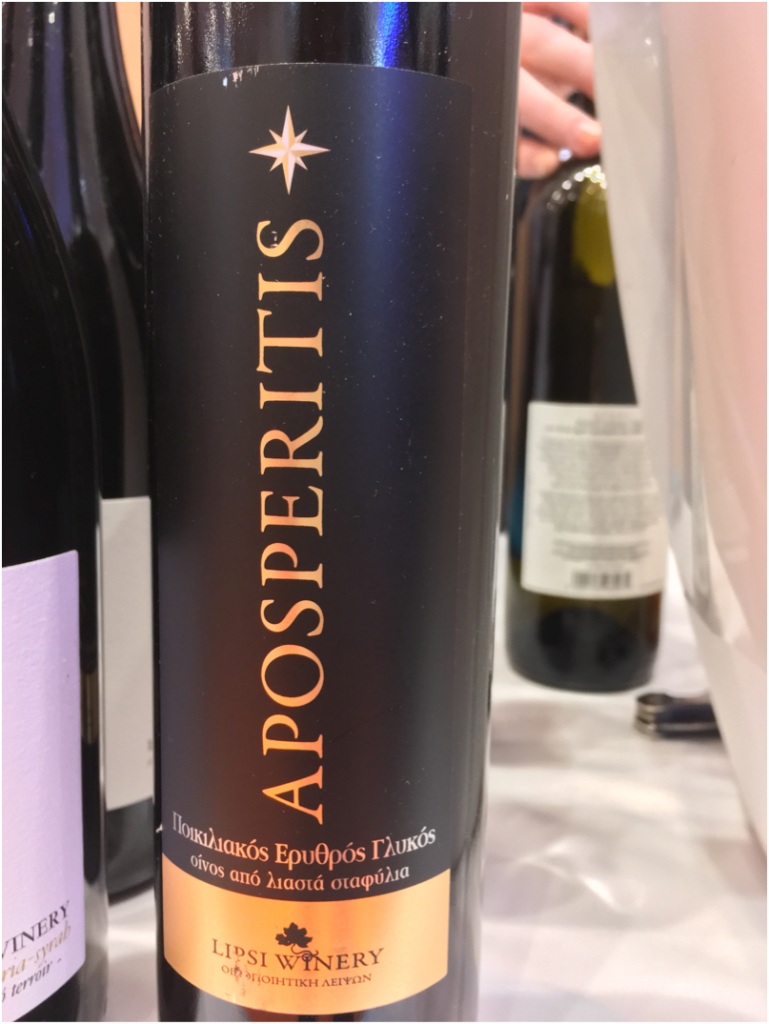
Nose: some oxidation, wild cherry, also black cherry under spirit.
Palate: lively acidity! Good balance, long finish. A fruit-driven sweet wine, so drinkable and long. Love it!
…
Also very good their dry red AKTEON 2017 (60% Fokiano, 40% Syrah) from young vines, 12 months in French oak barrels, medium body but good balance and persistence.
…
Still in the Eastern Aegean but moving North to Hios: ARIOUSIOS
Assyrtiko 2018
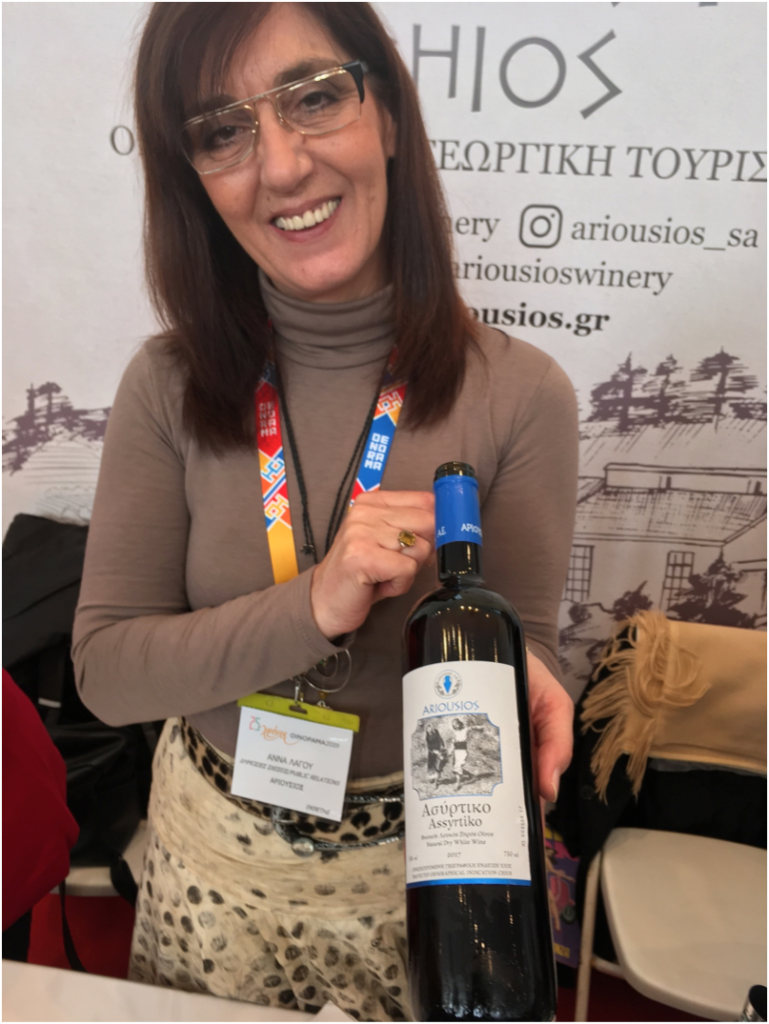
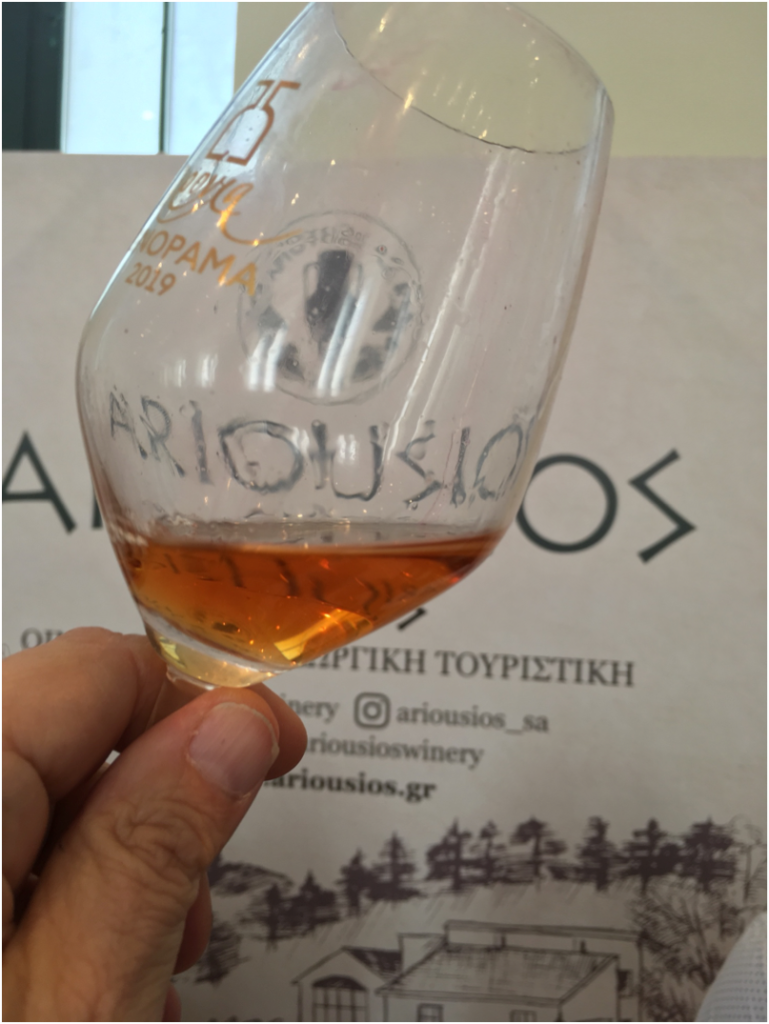
Nose: just a touch of oxidation, floral complexity.
Palate: forget about the sharpness of a conventional Assyrtiko, here you have roundness, harmony, tannins, a vast spectrum of floral and vegetal aromas but nearly any fruit nor minerality. Great persistence: I’m convinced that this wine after a few years can evolve further. Definitely an innovative approach to the varietal but a good one.
…
Hiotiko Natural 2015 No sulphites red 100% from indigenous Hiotiko.
Eye: almost ink – Nose: a bit fruity (sour cherry) and animal (mostly raw meat) – Palate: very tannic, which is a peculiarity of this variety, another animal sentor emerges, leather, which becomes prevalent towards the long finish. Again a great wine for my taste.
…
Now to SANTORINI: SIGALAS
Kavalieros 2017 100% Assyrtiko from a single vineyard at 300mt of altitude, 18 months on lees, unoaked.
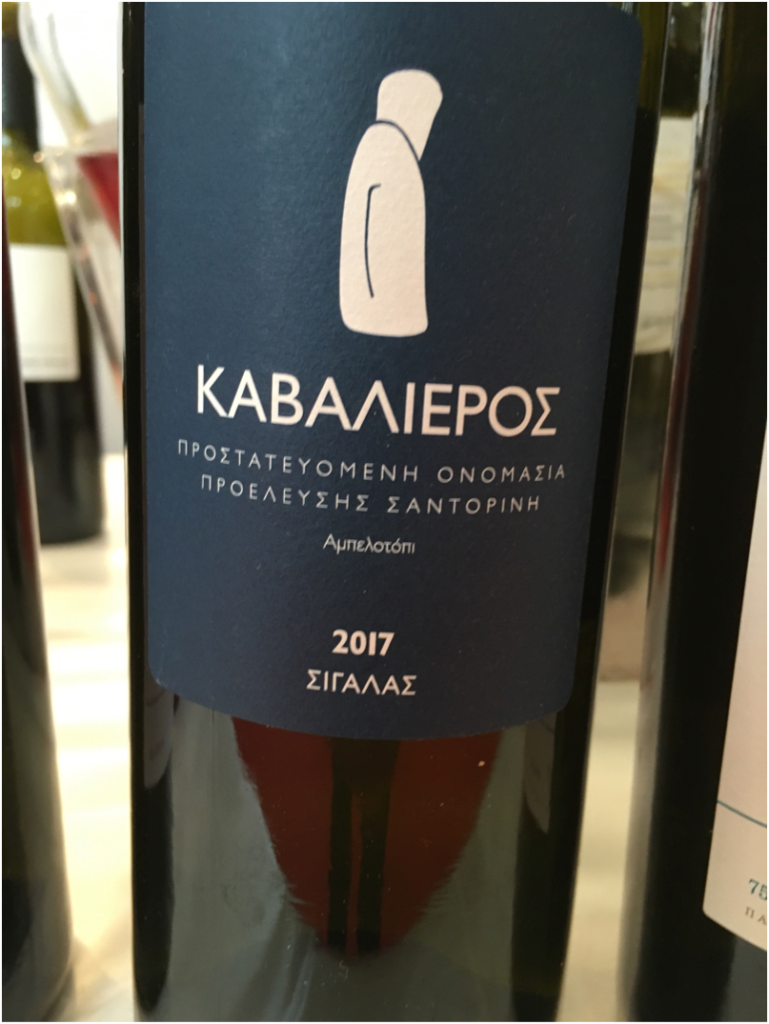
Nose : rather intense lemon.
Palate : the fruit is still there, with a “heavy metal” minerality, also great structure and a “never ending” finish. Among the very best of the island.
…
Vinsanto 2013 sweet straw wine 75% Assyrtiko, 25% Aidani. Aged in barriques
Eye : orange to granat – Nose : of great complexity, dried fig, a bit of apricot, a touch of hazelnut. Palate : low acidity, but it reveals spiciness, great persistence. I think it has still much life ahead, but it’ll never be an easy drink.
…
A final mention for their Apiliotis 2011, a 100% Mandilaria, ruby color, fruity nose of black cherry, dark plums, spiciness of black pepper and cloves especially on palate, the varietal tends to have green tannins which, in this case, give a nice tension.
…
That’s what I had to say on the wines from the Greek Islands tasted on this edition of Oenorama.
Of course also among the wines from the Mainland quite a few were excellent, some truly amazing. Really my first visit to this event went well beyond my already high expectations.
…
For further informations you can send a mail to this address : [email protected]
Yamas!
Gian Luca Garattoni, CST of the #winelover community

